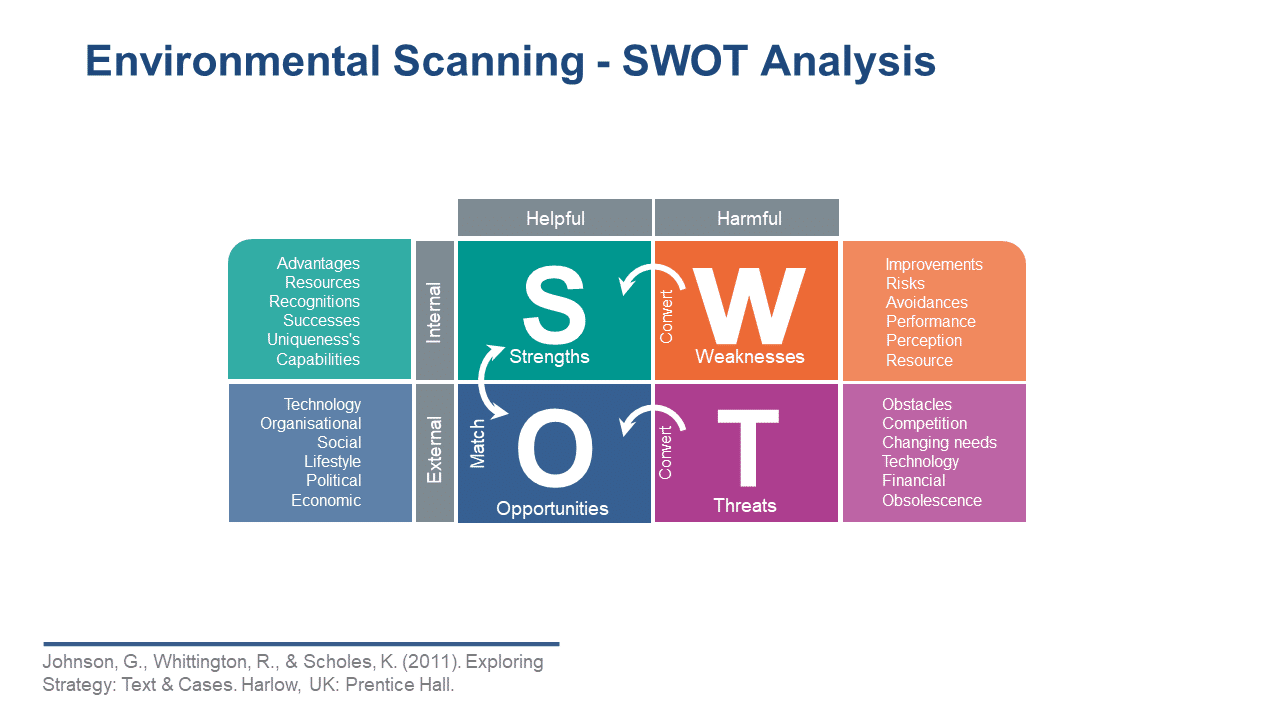1
Traditionally, the acronym SWOT stands for:
Strengths
Weaknesses
Opportunities
Threats
Strengths and Weaknesses are usually grouped in a SWOT template as Internal elements of an examination of our current state, and Opportunities and Threats as External elements of our current or future state.
Here is an overview of the integrated approach to conducting, analysing and completing a SWOT analysis.

Conducting a SWOT Analysis
To begin, start with an overall discussion of the situation you want to explore. Your facilitator will help you to define the context and the part of your organisation you want to examine. Some teams like to begin with a creative activity such as a Rich Picture process. Processes such as these are useful to help you ‘get out of your everyday focus’.
In the section at the end of the PressBook you will find some additional insights that may be of use to you and your team.
- Once you have set up the context and ways of working, work your way around the
Many of us work in the ‘Strengths-based mindset’ and thus we modify the nomenclature in this way:
S: Strengths and Capabilities
W: What we can change to better serve our stakeholders
O: Outside our immediate context, what can we see that is interesting, of possible benefit for us to consider, and might provide us with a way forward.
T: Threats that are outside our immediate context that may or do create barriers to our ongoing or future successes.
Here is an overview of the
